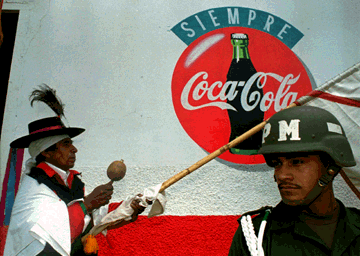Jan
26
Popular culture in Latin America
Posted by: Brian | January 26, 2009 | Comments Off on Popular culture in Latin America
The Faces of Popular Culture. Chapter 2. Before I started reading this weeks reading I counted how many pages it were, as I usually tend to do. 101 pages. I already anticipated a long read. 101 pages. This is going to take me hours I thought. I should start early. I thought. I kept thinking about this reading and how I should plan out alloted times so that I can finish reading before tuesday. I kept thinking this. So I started friday afternoon. Even as I started reading the pages I kept thinking about how I would finish before tuesday. I had this all planned out. Friday afternoon. One hour passed. Page 68. Despite not making it as far as I’d hope I still felt good that I made some progress. I highlighted parts that I found interesting then I decided to put the reading away for the next day. I hope that then I would be able to get through most of it. Tomorrow that is. I was done for Friday. So tomorrow, saturday arrived and so did my uncle and aunt from Seattle, Ricardo from Peru and my other uncle too. Ok Sophie, Sunday you can do it all. Sunday I got sick. It was sunny. Ok Sophie, Monday you will finish it and what’s more, you’ll write blog. Ah hah! Ok it’s monday night I’ve read up to page 100. I promise myself that tomorrow I’ll get through the last 50. But I reason that I have read enough to retain some understanding of what “popular culture in Latin America” is, or how it has been transformed, created, navigated itself through various economic and political changes.
—
Ok I’m done my introduction. Oh no now I’ve set up the expectations for this blog entry. Well at least I’ve given you some of the background in my reading and interpretation of this weeks reading. I found this reading quite interesting though yet sometimes a bit long. I mean I don’t mind lengthy reads, but usually I enjoy them more when its a story, or when it follows a certain character. Relating that to the reading, that is probably why I particularly enjoyed the “Oral Poetry and the Art of Storytelling” component. I can imagine the cantadores reciting poetry from the folhetos or pamphlets in outdoors markets creating this creative atmosphere for the enjoyment of the rural folk. It seems so amazing and wonderful. The “oral literature” which relies on oral transmission rather than written text to pass on legends, teachings, stories, anecdotes, and really the identity and culture is a distinct feature of many Latin American indigenous groups On a side note, its funny how our value towards writing and the written text, (being elite, intellectual, modern or whatever else that sounds good), is unavoidable. We have to attach the word literature to “oral literature” to justify the importance and the significance of these groups way of expression and communication. This actually ties in to the main thesis of this reading, how capitalism and really the economic changes have impacted the lives of the indigenous people living in Latin America and really all over the world. For instance illiteracy. Many indigenous people cannot read, but that’s because they didn’t need to, or they read in a different way, through interpreting stories, or images for instance. But now because of the changes in the economy through capitalism, it becomes necessary to learn to read and write. For educational purposes and to get a job. The industries, firms are coming, are operating next door to the houses of the rural folk and of course in the urban centre. It therefore becomes necessary to speak the dominant language and be able to communicate. But I don’t think its fair to judge indigenous people as inferior or ignorant or unknowing because they cannot read or write in the conventional way. Reading this article I became more conscious and aware of the great knowledge and depth that these people within these cultures have possessed and continue to hold (despite some being in different forms,) in their everyday lives.
